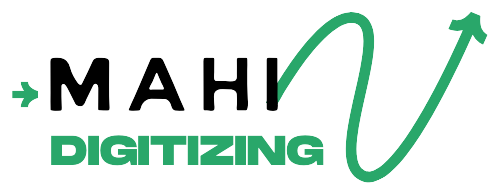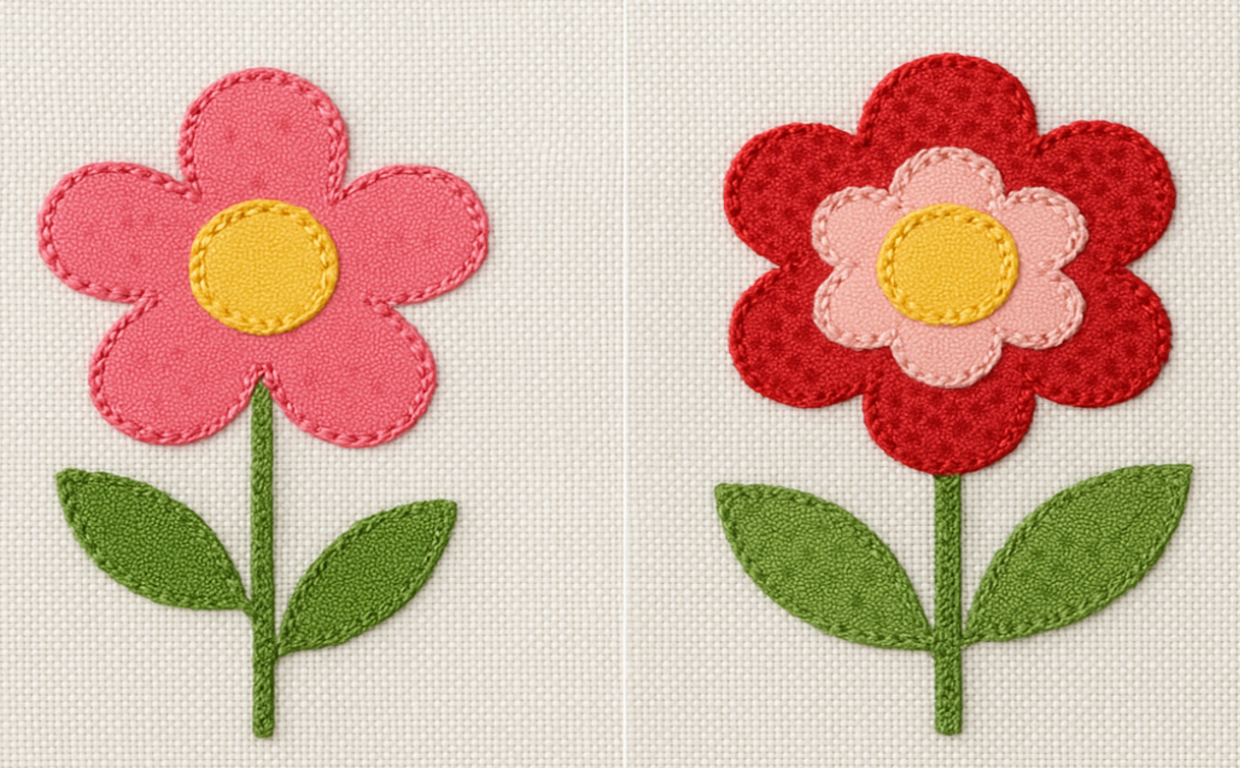Applique is a powerful embroidery method that enhances fabric with cut-out shapes and stitched details. But not all applique is the same. At Mahi Digitizing, we help clients choose between traditional and multi-layer applique based on design needs, texture goals, and stitch efficiency.
Understanding Traditional Applique
Traditional applique is the most widely used method in embroidery. It involves stitching one piece of fabric onto a base layer using decorative stitches.
This style typically relies on satin borders or zigzag edges to secure the fabric and create clean outlines.
Because of its simplicity, traditional applique works well for smaller text, logos, and uniform designs.
Designers often choose it for its lightweight finish and classic embroidered look.
We recommend traditional applique for single-shape designs or when a clean, flat finish is required.
What Is Multi-Layer Applique?
Multi-layer applique takes traditional techniques a step further by stacking multiple fabric layers to build depth and detail.
Each layer is precisely cut and placed to form shadows, highlights, or different color zones in a single design.
This approach allows for more complex visuals such as faces, logos, or illustrations with multiple components.
Although it takes longer to digitize and stitch, the results are richer and more dynamic.
We use this method when clients want intricate, high-impact embroidery that stands out.
Visual and Dimensional Differences
One key difference between the two methods lies in how they look and feel. Traditional applique creates a flatter, cleaner appearance.
Multi-layer applique, in contrast, delivers added dimension. The stacked fabrics make the design pop from the base material.
This dimensional effect can simulate depth, perspective, or motion—especially in large graphics or mascots.
While both options are visually appealing, multi-layer stands out more for bold branding or decorative elements.
We help you assess your design to choose the method that enhances visual impact without overcomplicating the stitch path.
Complexity and Stitching Time
Traditional applique is faster to digitize and stitch. It typically requires fewer trims and machine stops during production.
Multi-layer applique demands more time due to added pieces, alignments, and backing requirements.
Because each fabric layer must be tacked down before the next is added, setup precision becomes critical.
However, for premium embroidery jobs, the time investment often pays off in quality and uniqueness.
Our team ensures each file is optimized for efficient production regardless of the method you choose.
Which One Is Best for You?
To decide between traditional and multi-layer applique, consider these key factors:
- Design complexity: Simple logos work best with traditional. Detailed graphics benefit from layering.
- Production time: Traditional applique stitches faster with fewer steps.
- Texture preference: Choose multi-layer for a tactile, raised finish.
- Cost efficiency: Traditional applique is more affordable due to reduced material and time.
- End use: Uniforms and team gear often use traditional, while branding patches use multi-layer.
We help you balance design goals with production needs to make the right call.
Digitizing Considerations
Digitizing traditional applique requires accurate border placement and minimal layering. The focus is on clean stitching and shape control.
Multi-layer applique digitizing, however, involves multiple stitch runs, color stops, and fabric overlays.
It’s important to manage layer registration, fabric type, and cutline precision during the digitizing phase.
We use special alignment marks and stitching techniques to keep layers from shifting during embroidery.
Our expert digitizers ensure your file runs smoothly on any commercial or home embroidery machine.
Durability and Fabric Interaction
Both styles can last for years if stitched properly. However, material selection makes a difference in wear and maintenance.
Traditional applique works well with thinner fabrics like cotton or twill, offering long-term hold with minimal bulk.
Multi-layer designs need stronger backing or thicker base fabrics to support the added weight of multiple layers.
We test stitch tension and stabilization to make sure your applique lasts through washing, heat, and regular use.
When durability matters most, we guide you in choosing the best fabric combinations and finishes.
Why Mahi Digitizing Is Your Best Choice
At Mahi Digitizing, we specialize in both traditional and multi-layer applique digitizing. We analyze every design to recommend the most effective, budget-friendly method.
Our files are crafted for accuracy, clarity, and compatibility across embroidery machines.
From small school logos to large fashion panels, we help bring your vision to life with clean, layered precision.
Ready to explore the difference for yourself? We offer free quotes and expert advice to help you get started.
Request a free quote or contact us today to transform your design into stunning applique embroidery.

